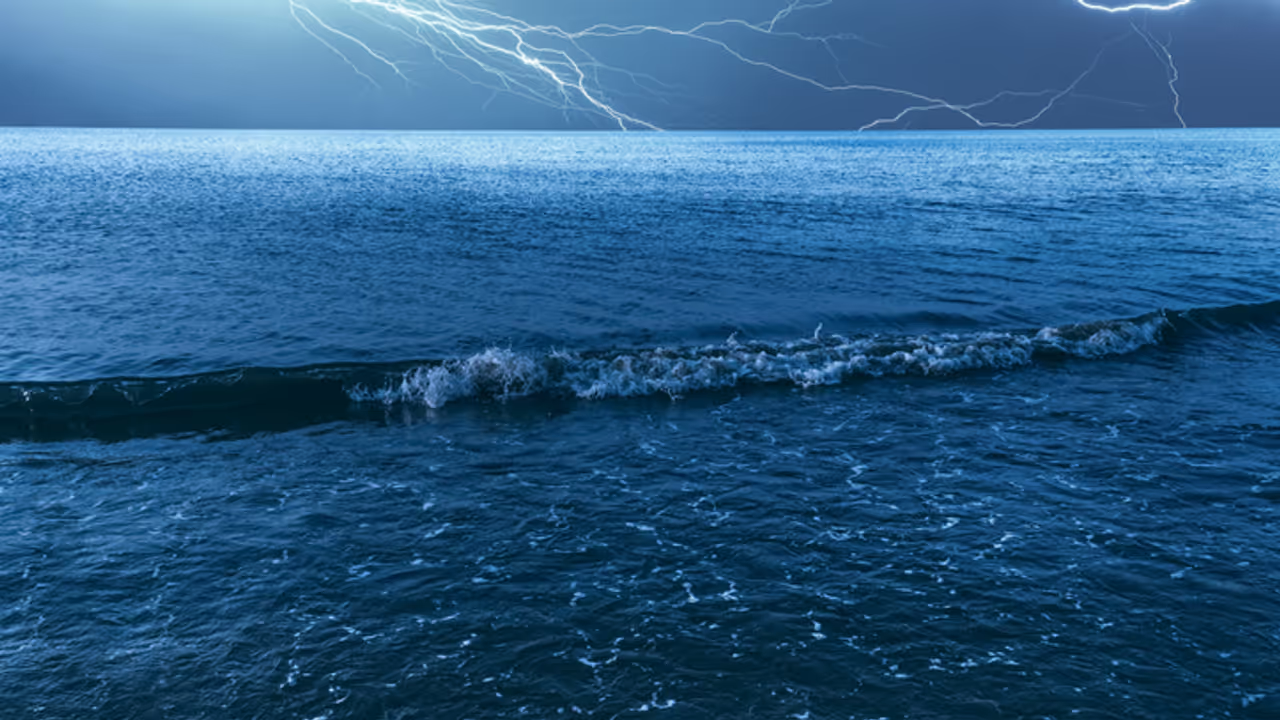Hurricane Barbara, the first of 2025, is threatening Mexico’s Pacific coast with dangerous surf, flooding, and rip currents. With two other active storms, officials warn 17 million people to prepare for life-threatening conditions.
First hurricane of 2025 forms as 17 million people face life-threatening conditions The first hurricane of 2025 has formed in the Eastern Pacific, putting millions in Mexico and nearby coastal regions on high alert.

Named Hurricane Barbara, the storm is expected to trigger flooding, deadly rip currents, and mudslides over the coming days, according to the National Hurricane Center (NHC), the division of the United States' NOAA/National Weather Service, reports Daily Mail.
Barbara becomes season’s first hurricane
Storm Barbara strengthened into a hurricane on Monday after reaching sustained winds of 75 mph, surpassing the 74 mph threshold needed for hurricane status. The storm is currently located about 155 miles southwest of Manzanillo, moving northwest at around 10 mph.
Swells caused by Barbara are expected to hit the southwestern Mexican coastline, especially the states of Guerrero, Michoacán, Colima, and Jalisco. Forecasts predict up to four inches of rainfall, raising concerns of flash floods and mudslides in the mountainous terrain.
“These waves can cause dangerous surf and life-threatening rip current conditions,” the NHC warned.
Cosme close to hurricane strength, more storms brewing
Barbara isn't the only threat. Tropical Storm Cosme, which formed on Sunday, is also building strength with winds of 65 mph as of Monday. Cosme is expected to approach near-hurricane strength by Monday night before turning northeast and accelerating into midweek.
Meanwhile, the NHC is watching a third weather system that has a 60% chance of developing into the fourth named storm of the season, to be called Dalila.
So far, Tropical Storm Alvin, which formed on June 1, was the first named storm of the year but dissipated quickly before reaching hurricane strength.
According to AccuWeather’s lead hurricane forecaster Alex DaSilva, the 2025 season has kicked off faster than usual. In contrast, 2024 saw its first Pacific storm only by July 4.
“The Eastern Pacific has come alive with tropical storms already,” DaSilva said.
Atlantic unusually quiet due to Saharan dust
While the Pacific basin is active, the Atlantic hurricane season has been quiet so far, largely due to a massive plume of Saharan dust covering Florida and nearby regions. This dust layer reduces sea surface temperatures and brings dry air and strong winds, all of which suppress storm formation.
The average date for the first named storm in the Atlantic is June 20, but experts say conditions are currently not favorable.
Despite the slow start, the National Oceanic and Atmospheric Administration (NOAA) has forecast an above-average hurricane season for the Atlantic in 2025. Their latest predictions include:
- Up to 19 named storms
- 10 hurricanes
- 5 major hurricanes
Officials urge early preparation
NOAA’s National Weather Service Director, Ken Graham, urged the public to take early precautions, "Every Category 5 hurricane that has ever hit this country was a tropical storm or less just three days prior."
He advised residents in hurricane-prone areas to stock up on water, fuel, and emergency supplies before panic sets in. Laura Grimm, NOAA’s Chief of Staff, added confidence to the forecast, "Our prediction for 2024 was right on the money."
Last year’s deadly reminder The warnings come against the backdrop of a deadly 2024 hurricane season, where six major storms, including Hurricanes Helene and Milton, caused damage totaling over $500 billion. Around 400 people died, making it the deadliest hurricane season since 2005.
AccuWeather has predicted that 2025 could see similar devastation if the current pattern continues.
With multiple storms already in motion and weather conditions intensifying, experts are urging the public, especially in Pacific coastal regions, to stay alert and follow official updates from the NHC and local authorities.

